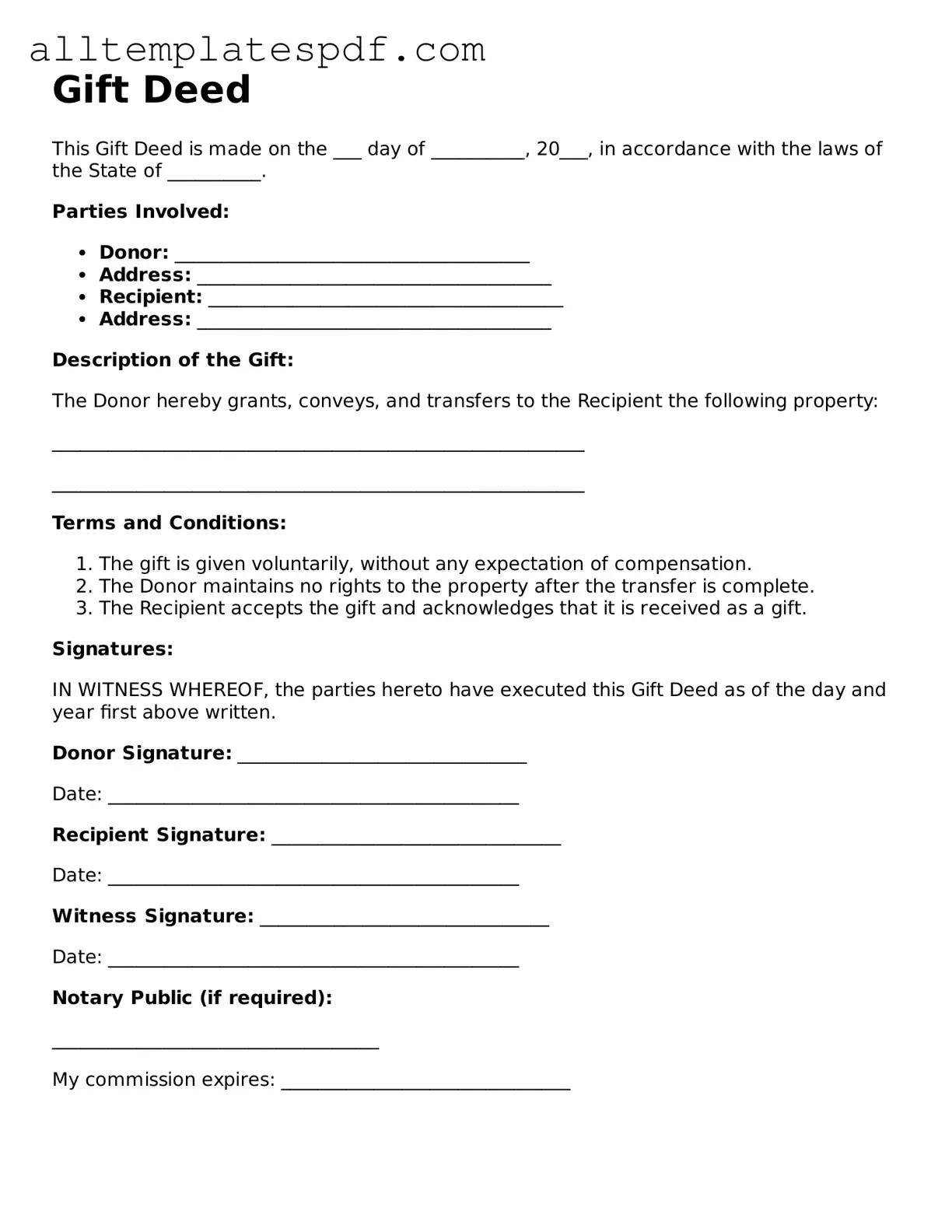When completing a Gift Deed form, individuals often overlook critical details that can lead to complications down the line. One common mistake is failing to provide accurate descriptions of the property being gifted. A vague description can create confusion and may lead to disputes later. It is essential to include precise details such as the property address, legal description, and any identifying features.
Another frequent error is not including the full names of both the donor and the recipient. Omitting middle names or initials can result in legal ambiguities. To avoid this, ensure that all parties' names are spelled correctly and match their identification documents. This small step can prevent significant issues in the future.
People often forget to include the date of the gift. This date is vital as it establishes when the transfer of ownership occurred. If the date is missing, it may raise questions about the intent of the gift and complicate the transfer process.
Additionally, many individuals neglect to have the Gift Deed notarized. A notarized document adds an extra layer of authenticity and can be crucial if the gift is ever challenged. Without notarization, the validity of the deed may come into question, leading to potential disputes.
Another mistake involves not understanding the tax implications of gifting property. Some individuals may not realize that gifts above a certain value can trigger tax liabilities. Consulting with a tax professional before completing the form can help clarify these responsibilities and ensure compliance with tax laws.
People sometimes fail to communicate openly with all parties involved. It is essential to discuss the gift with the recipient and any other relevant family members. Lack of communication can lead to misunderstandings and hurt feelings, especially if there are multiple heirs or beneficiaries.
In some cases, individuals do not keep a copy of the completed Gift Deed. This oversight can create problems if the recipient needs to prove ownership or if disputes arise later. Always retain a copy for personal records and provide one to the recipient as well.
Finally, many people overlook the importance of reviewing the entire document before submission. Errors in spelling, grammar, or missing sections can invalidate the deed. A thorough review ensures that all information is correct and that the document meets legal requirements.
